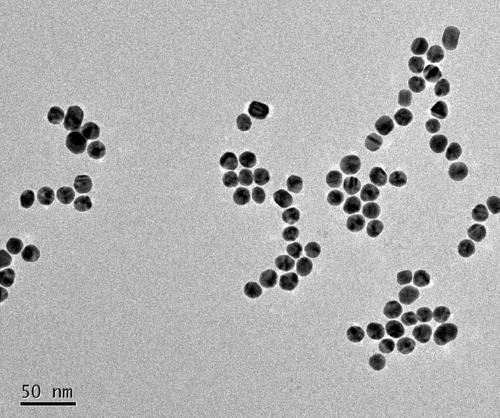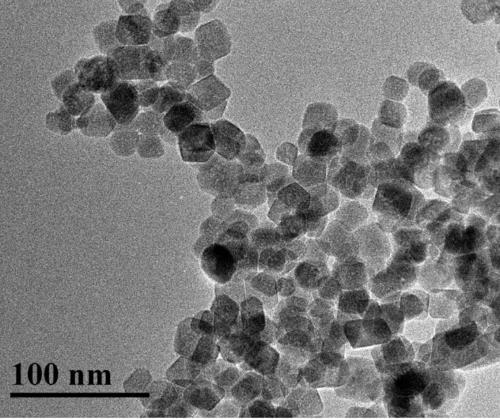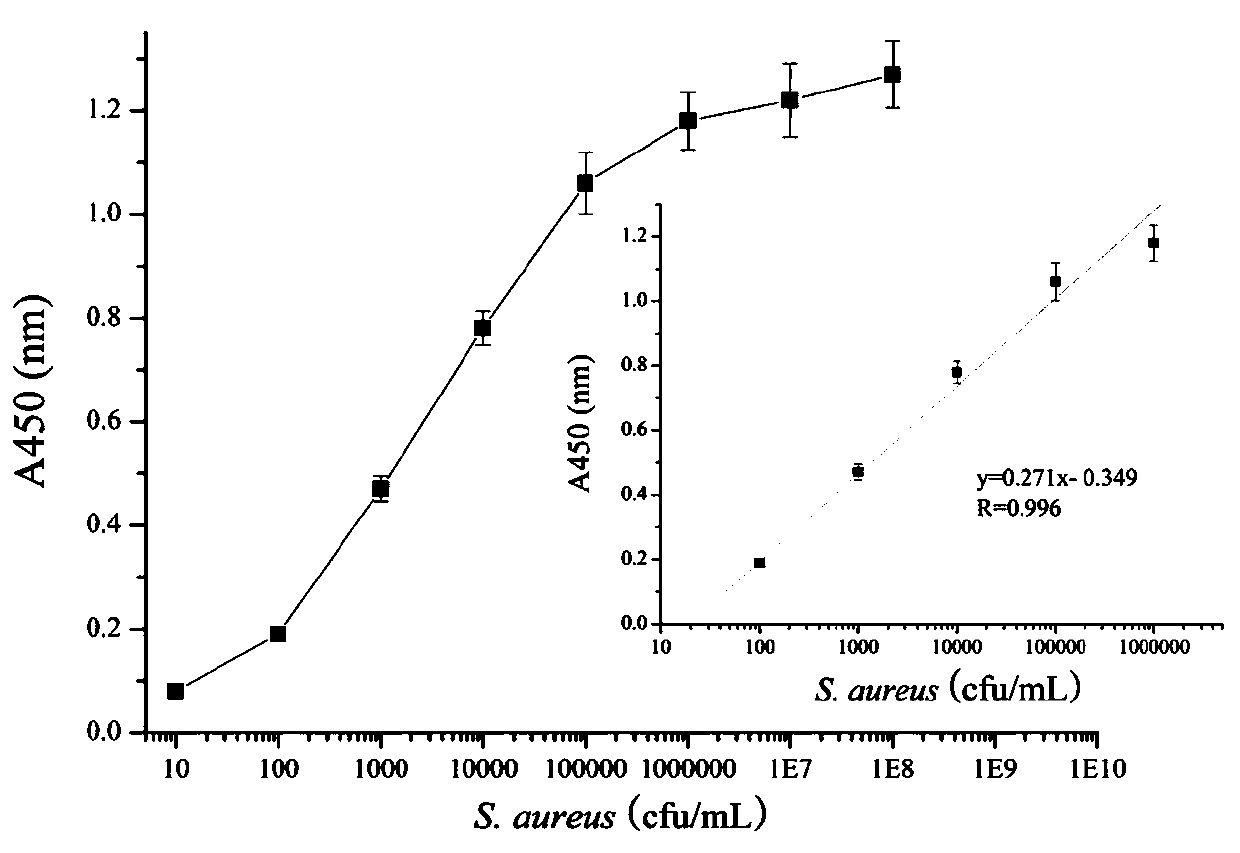Staphylococcus aureus colorimetric sensation detection method based on aptamer recognization-HCR (hybridization chain reaction) and application of method
A Staphylococcus, colorimetric sensing technology, applied in the determination/inspection of microorganisms, biochemical equipment and methods, color/spectral property measurement, etc., can solve the problems of high cost, easy inactivation of antibodies, etc. Reduce matrix interference and overcome the effect of long preparation cycle
- Summary
- Abstract
- Description
- Claims
- Application Information
AI Technical Summary
Problems solved by technology
Method used
Image
Examples
Embodiment 1
[0037] Embodiment 1: The establishment of the Staphylococcus aureus colorimetric sensing detection method based on the aptamer recognition-HCR reaction, including the following specific steps:
[0038] (1) Preparation of DNA-modified gold nanoprobes: 1 mL of synthesized 20 nm gold nanoparticles was washed with K 2 CO 3 The pH of the solution was adjusted to 8.0, and it was concentrated 10 times by centrifugation at 10,000 r / min; 10 μL of sulfhydryl-modified aptamer 2 (SH-apt2, 1 μM) and priming strand (TP, 5 μM) were taken respectively Added to 4 μL tris-(2-formylethyl)phosphine hydrochloride (TCEP, 1 mM) solution, reacted in the dark for 1 h, added to the colloidal gold solution, coupled for 2 h, then added 10 uL dATP (100 μM) solution, reacted at room temperature for 1 h, added NaCl solution to make the final concentration 80 mM, aged at 4 °C overnight; centrifuged at 1000 rpm / min, 4 °C for 10 min, and discarded the supernatant to obtain Apt 1-AuNPs- TP probe, suspended in...
Embodiment 2
[0044] Example 2: Detection of milk samples by colorimetric sensing of Staphylococcus aureus based on aptamer recognition-HCR reaction
[0045] (1) Preparation of samples to be tested: 25 mL of milk samples were taken aseptically and added to the quality bag, then 25 mL of sterile saline was added, and homogenized at 9000 r / min for 2 min to obtain the sample solution to be tested.
[0046] (2) Sample detection: Take 50 μL of Apt1-MB (10 mg / mL), add it to the microplate well, add 50 μL of the solution to be tested, incubate at 37 °C for 30 min, magnetically separate, wash with PBS, and resuspend in 100 μL Add 50 μL HCR reaction product to PBS solution, incubate at 37°C for 30 min, magnetically separate, wash with PBS, add 100 μL SA-HRP (0.5 μg / mL) solution, react at room temperature for 30 min, magnetically separate, wash with PBS, add to each well 100 μL TMB was added for 10 min to develop color in the dark, and finally 100 μL stop solution (2.0 mol / L H 2 SO 4 ), measured th...
Embodiment 3
[0047] Embodiment 3: Specific verification of Staphylococcus aureus colorimetric sensing detection method based on aptamer recognition-HCR reaction
[0048] Add the PBS buffer solution containing Apt1-MB (10 mg / mL) to the wells of the microtiter plate, 50 μL per well, and add 50 μL at a concentration of 10 4 Cfu / mL suspensions of standard bacterial strains such as Salmonella typhimurium, Escherichia coli O157:H7, Listeria monocytogenes, Shigella dysenteriae, etc., incubated at 37 °C for 1 h. Magnetic separation, PBS washing, resuspended in 100 uL PBS solution, adding 50 uL HCR reaction product, incubate at 37°C for 30 min, magnetic separation, PBS washing. Add 100 uL SA-HRP (0.5ug / mL) solution, react at room temperature for 30 min, magnetically separate, and wash with PBS. Add 100 uL TMB to each well, develop color in the dark for 10 min, and finally add 100 μL stop solution (2.0 mol / L H 2 SO 4 ), and measure the absorbance at 450 nm with a microplate reader. Depend on ...
PUM
 Login to View More
Login to View More Abstract
Description
Claims
Application Information
 Login to View More
Login to View More - R&D
- Intellectual Property
- Life Sciences
- Materials
- Tech Scout
- Unparalleled Data Quality
- Higher Quality Content
- 60% Fewer Hallucinations
Browse by: Latest US Patents, China's latest patents, Technical Efficacy Thesaurus, Application Domain, Technology Topic, Popular Technical Reports.
© 2025 PatSnap. All rights reserved.Legal|Privacy policy|Modern Slavery Act Transparency Statement|Sitemap|About US| Contact US: help@patsnap.com



